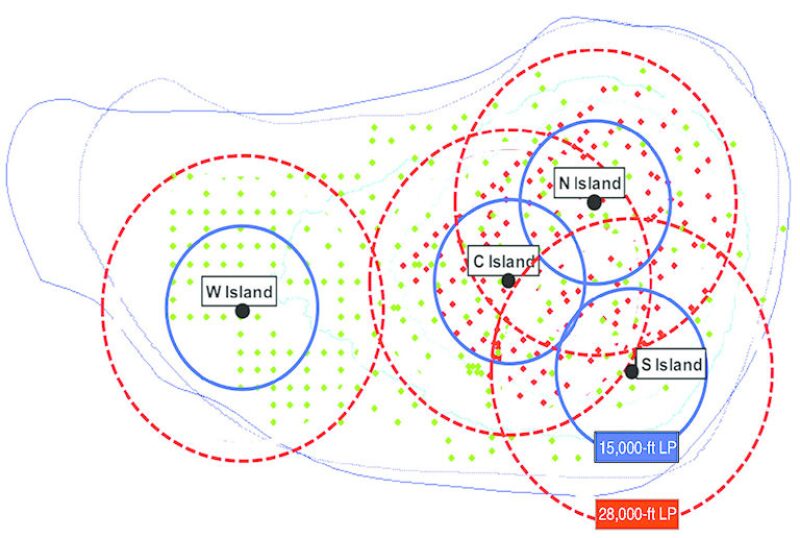As part of a project that involves the use of four artificial islands to drill and complete more than 300 extended-reach-drilling (ERD) wells in a giant offshore oil field, several completion designs have been piloted for brownfield development. One well design incorporated the use of inflow-control devices (ICDs) and swell packers, which was the operator’s first use of such technology in a production well. The technology was installed in the pilot well to test inflow control and to manage future water production.
Introduction
The giant 1200-km2 offshore oil field is located 84 km northwest off Abu Dhabi Island and consists of a layered carbonate formation that was discovered in 1963. It has still only produced a small percentage of original oil in place, with water cut (WC) less than 15%. There have been almost 500 wells drilled in the field since field discovery. Development was based on pattern producer/injector wells, with each well using a dry tree on a wellhead platform tower.
To achieve the strategic goal of increasing the production rate by approximately 40% and maintaining a plateau for up to 25 years, a brownfield development plan (UZ-750) has been generated that will use four artificial islands (Fig.


